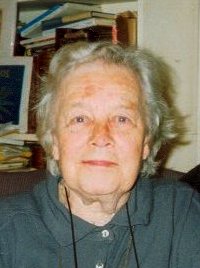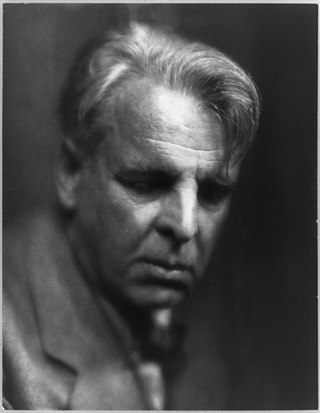Related Research Articles

Edgar Allan Poe was an American writer, poet, editor, and literary critic who is best known for his poetry and short stories, particularly his tales involving mystery and the macabre. He is widely regarded as one of the central figures of Romanticism and Gothic fiction in the United States and of early American literature. Poe was one of the country's first successful practitioners of the short story, and is generally considered to be the inventor of the detective fiction genre. In addition, he is credited with contributing significantly to the emergence of science fiction. He is the first well-known American writer to earn a living by writing alone, which resulted in a financially difficult life and career.

"The Black Cat" is a short story by the American writer Edgar Allan Poe. It was first published in the August 19, 1843, edition of The Saturday Evening Post. In the story, an unnamed narrator has a strong affection for pets until he perversely turns to abusing them. His favorite, a pet black cat, bites him one night and the narrator punishes it by cutting its eye out and then hanging it from a tree. The home burns down but one remaining wall shows a burned outline of a cat hanging from a noose. He soon finds another black cat, similar to the first except for a white mark on its chest, but he develops a hatred for it as well. He attempts to kill the cat with an axe but his wife stops him; instead, the narrator murders his wife. He conceals the body behind a brick wall in his basement. The police soon come and, after the narrator's tapping on the wall is met with a shrieking sound, they find not only the wife's corpse but also the black cat that had been accidentally walled in with the body and alerted them with its cry.

"The Pit and the Pendulum" is a short story by American writer Edgar Allan Poe and first published in 1842 in the literary annual The Gift: A Christmas and New Year's Present for 1843. The story is about the torments endured by a prisoner of the Spanish Inquisition, though Poe skews historical facts. The narrator of the story describes his experience of being tortured. The story is especially effective at inspiring fear in the reader because of its heavy focus on the senses, such as sound, emphasizing its reality, unlike many of Poe's stories which are aided by the supernatural. The traditional elements established in popular horror tales at the time are followed, but critical reception has been mixed. The tale has been adapted to film several times.

William Blake was an English poet, painter, and printmaker. Largely unrecognised during his life, Blake has become a seminal figure in the history of the poetry and visual art of the Romantic Age. What he called his "prophetic works" were said by 20th-century critic Northrop Frye to form "what is in proportion to its merits the least read body of poetry in the English language". While he lived in London his entire life, except for three years spent in Felpham, he produced a diverse and symbolically rich collection of works, which embraced the imagination as "the body of God", or "human existence itself".

William Butler Yeats was an Irish poet, dramatist and writer, and one of the foremost figures of 20th-century literature. He was a driving force behind the Irish Literary Revival, and along with Lady Gregory founded the Abbey Theatre, serving as its chief during its early years. He was awarded the 1923 Nobel Prize in Literature, and later served two terms as a Senator of the Irish Free State.

John Butler Yeats was an Irish artist and the father of W. B. Yeats, Lily Yeats, Elizabeth Corbett "Lollie" Yeats and Jack Butler Yeats. The National Gallery of Ireland holds a number of his portraits in oil and works on paper, including one of his portraits of his son William, painted in 1900. His portrait of John O'Leary (1904) is considered his masterpiece.
Dorothy Violet Wellesley, Duchess of Wellington, styled Lady Gerald Wellesley between 1914 and 1943, was an English author, poet, literary editor and socialite.
“The Second Coming” is a poem written by Irish poet William Butler Yeats in 1919, first printed in The Dial in November 1920 and included in his 1921 collection of verses Michael Robartes and the Dancer. The poem uses Christian imagery regarding the Apocalypse and Second Coming to describe allegorically the atmosphere of post-war Europe. It is considered a canonical work of modernist poetry and has been reprinted in several collections, including The Norton Anthology of Modern Poetry.

Kathleen Jessie Raine was a British poet, critic and scholar, writing in particular on William Blake, W. B. Yeats and Thomas Taylor. Known for her interest in various forms of spirituality, most prominently Platonism and Neoplatonism, she was a founding member of the Temenos Academy.

Edwin John Ellis (1848–1916) was a British poet and illustrator. He is now remembered mostly for the three-volume collection of the works of William Blake he edited with W. B. Yeats. It is now criticised, however, for weak scholarship, and preconceptions.
The Tower is a book of poems by W. B. Yeats, published in 1928. The Tower was Yeats's first major collection as Nobel Laureate after receiving the Nobel Prize in 1923. It is considered to be one of the poet's most influential volumes and was well received by the public.

Enochian chess is a four-player chess variant, similar to chaturaji, associated with the Hermetic Order of the Golden Dawn. The name comes from the Enochian system of magic of Dr. John Dee, which was later adapted by Victorian members of the Golden Dawn into "a complete system of training and initiation".
This is a list of all works by Irish poet and dramatist W. B. Yeats (1865–1939), winner of the 1923 Nobel Prize in Literature and a major figure in 20th-century literature. Works sometimes appear twice if parts of new editions or significantly revised. Posthumous editions are also included if they are the first publication of a new or significantly revised work. Years are linked to corresponding "year in poetry" articles for works of poetry, and "year in literature" articles for other works.

The Edgar Allan Poe Cottage is the former home of American writer Edgar Allan Poe. It is located on Kingsbridge Road and the Grand Concourse in the Fordham neighborhood of the Bronx, New York, a short distance from its original location, and is now in the northern part of Poe Park.
Barbara Margaret Trimble was a British writer of more than 20 crime, thriller and romance novels between 1967 and 1991, under the names of Margaret Blake, B. M. Gill and Barbara Gilmour.

Blood and the Moon is a poem by Irish poet William Butler Yeats written in 1927. It was first published in the Spring 1928 issue of The Exile and then in the collection The Winding Stair in 1929, before being reprinted in The Winding Stair and Other Poems in 1933. Yeats composed the poem in response to the 1927 assassination of Kevin O'Higgins, the Vice-President of the Free State, whom Yeats had known personally. The poem contains many themes common in Yeats's poems from the 1920s including the "tower", a reference to Thoor Ballylee, which had been the title of a collection of works printed the year before "Blood and the Moon" was published, as well as the "gyre" which had been a major focus of his 1920 poem "The Second Coming".
"The Duc de L'Omelette" is a humorous short story by American writer Edgar Allan Poe. It was first published in the Philadelphia Saturday Courier on March 3, 1832, and was subsequently revised a number of times by the author.
The Gift of Harun Al-Raschid, written in 1923, is a poem by the Irish poet William Butler Yeats, first published in 1924 in the American journal The Dial in a collection of The Cat and the Moon and Certain Poems. The poem was then published in his prose book A Vision in 1925 and was included in Yeats's collection of The Tower, which was published in 1928.
George Mills Harper was an American academic, a WW2 U.S. Navy officer and professor emeritus of English literature. Harper is remembered today, mainly, as a literary scholar of the Irish poet and mystic, W. B. Yeats, who was a Nobel laureate in literature (1923). He is known for his prolific publications and authoritative books about Yeats's lifelong occult activity and interests, which began and developed early in his poetical career. Harper was also, for a much lesser extent, an academic scholar of the Neoplatonism of William Blake.

The Works of William Blake: Poetic, Symbolic and Critical, edited with lithographs of the illustrated prophetic books, and a memoir and interpretation by Edwin John Ellis and William Butler Yeats, is a three-volume commentary book about the English poet, painter and printmaker William Blake.
References
- ↑ Meyers, Jeffrey. Edgar Allan Poe: His Life and Legacy. New York: Cooper Square Press, 1992. p. 214. ISBN 0-8154-1038-7
- ↑ Hoffman, Daniel. Poe, Poe, Poe, Poe, Poe, Poe, Poe. New York: Avon Books, 1972. p. 292. ISBN 0-380-41459-7
- ↑ Croft, Barbara L., "Stylistic Arrangements": A Study of William Butler Yeats's A Vision, Bucknell University Press, 1987. ISBN 0-8387-5087-7